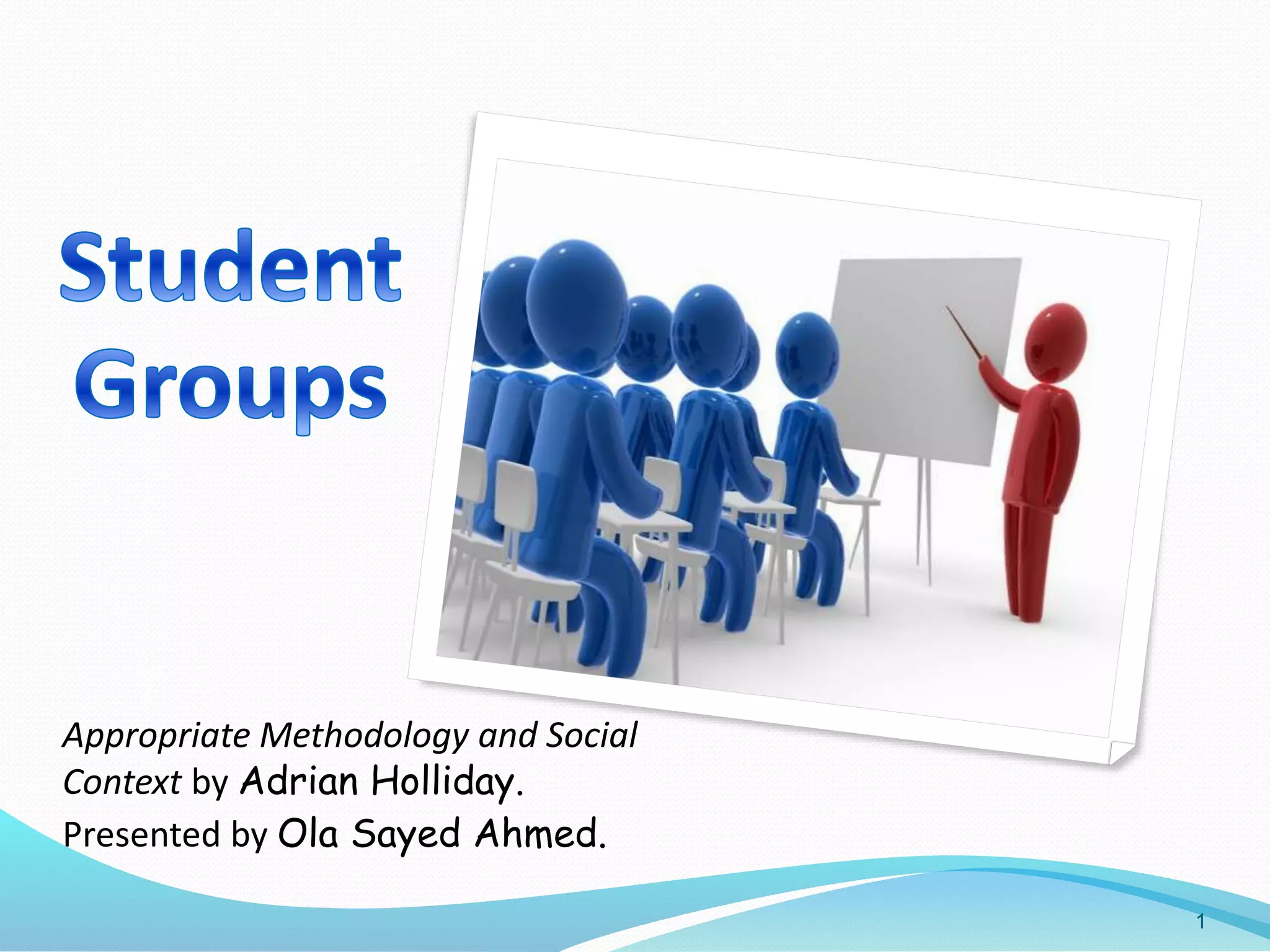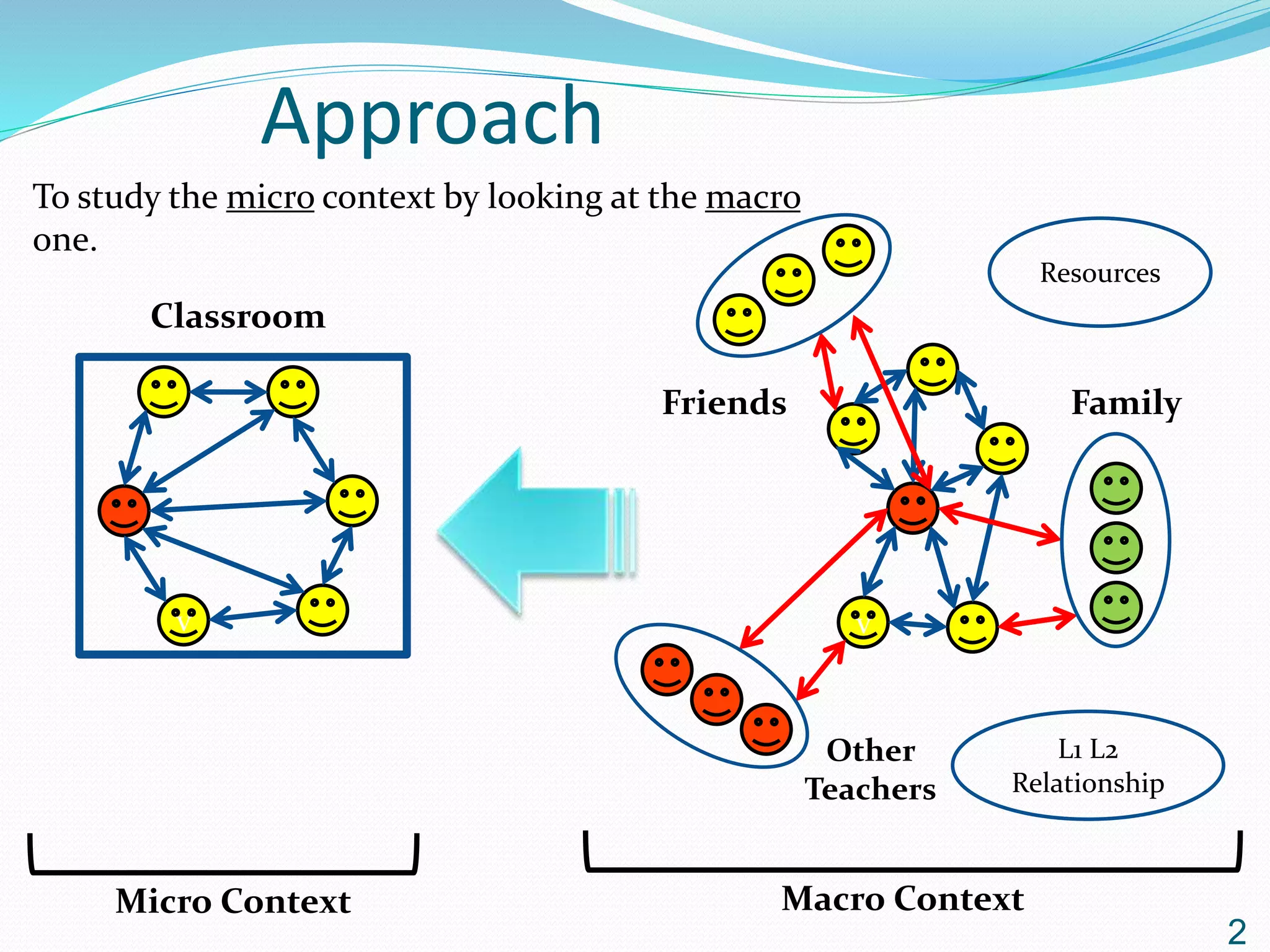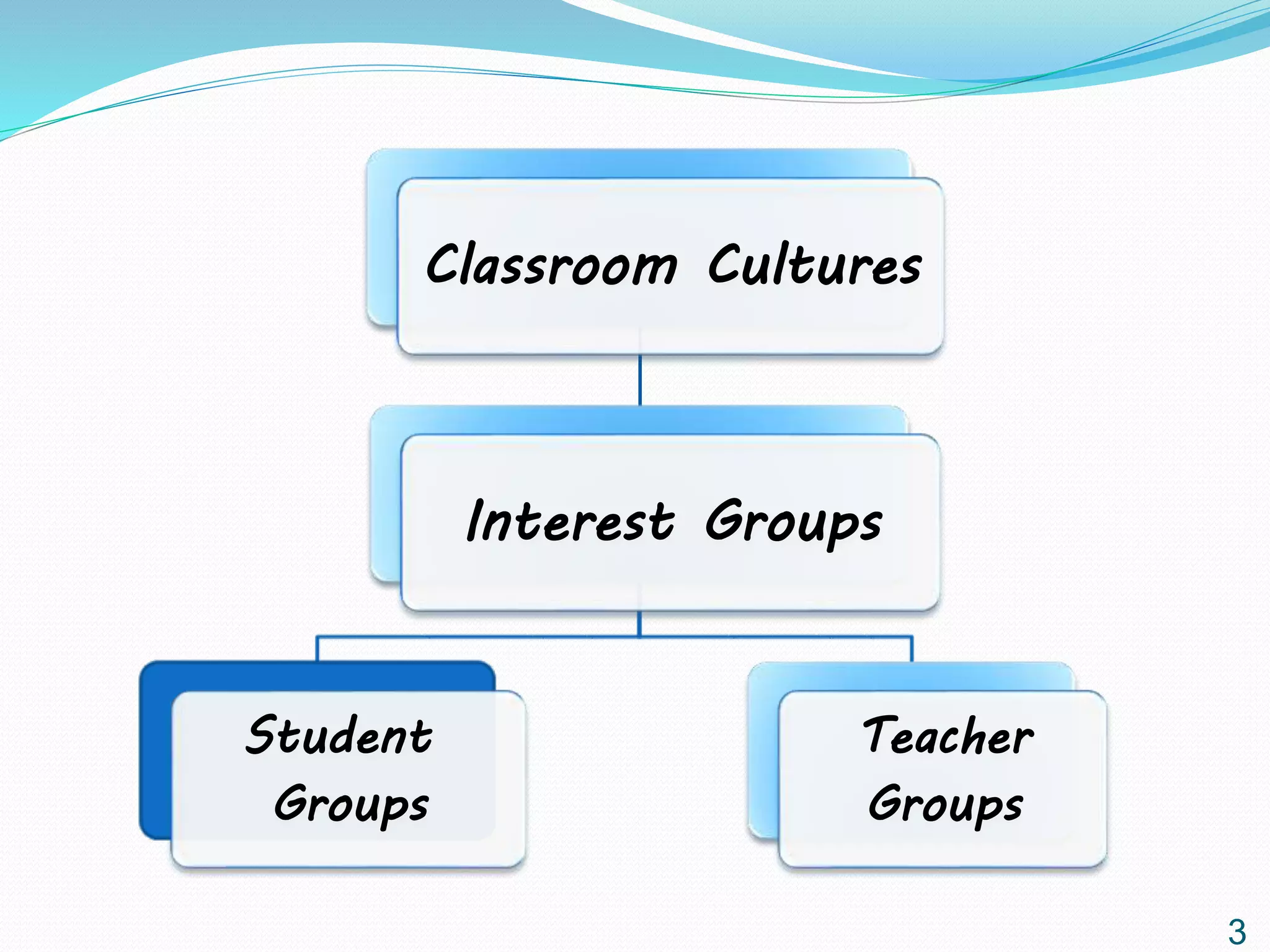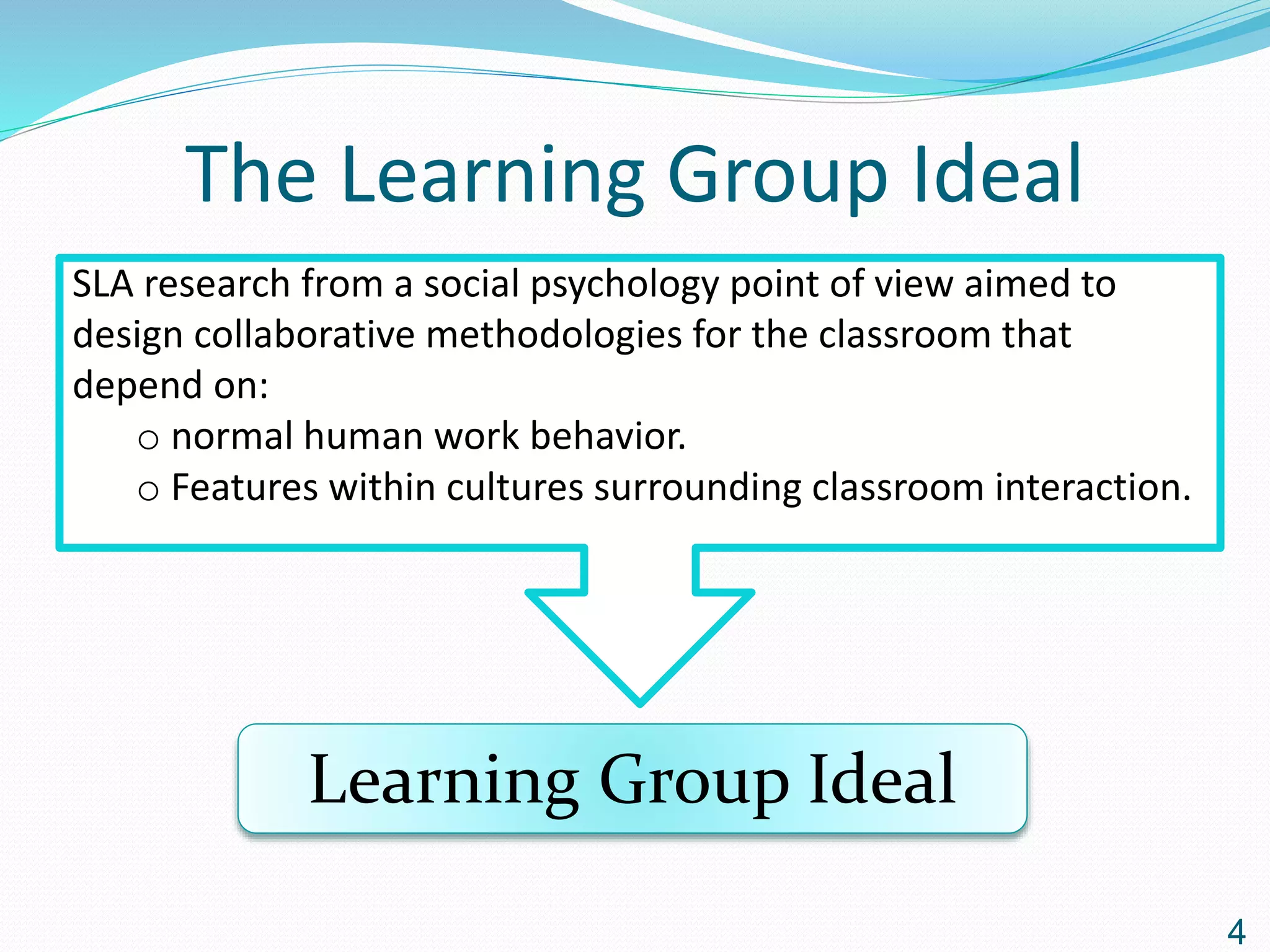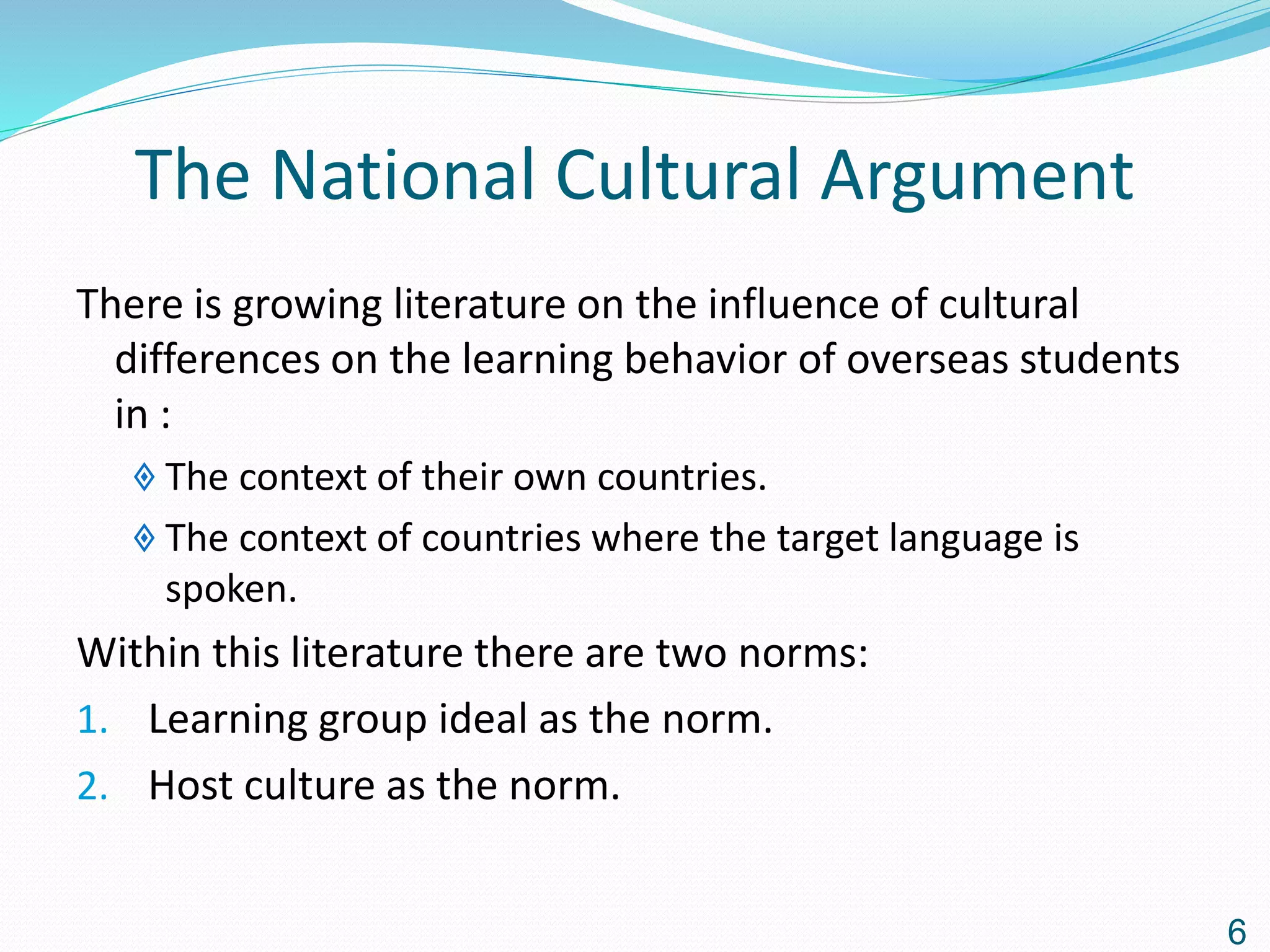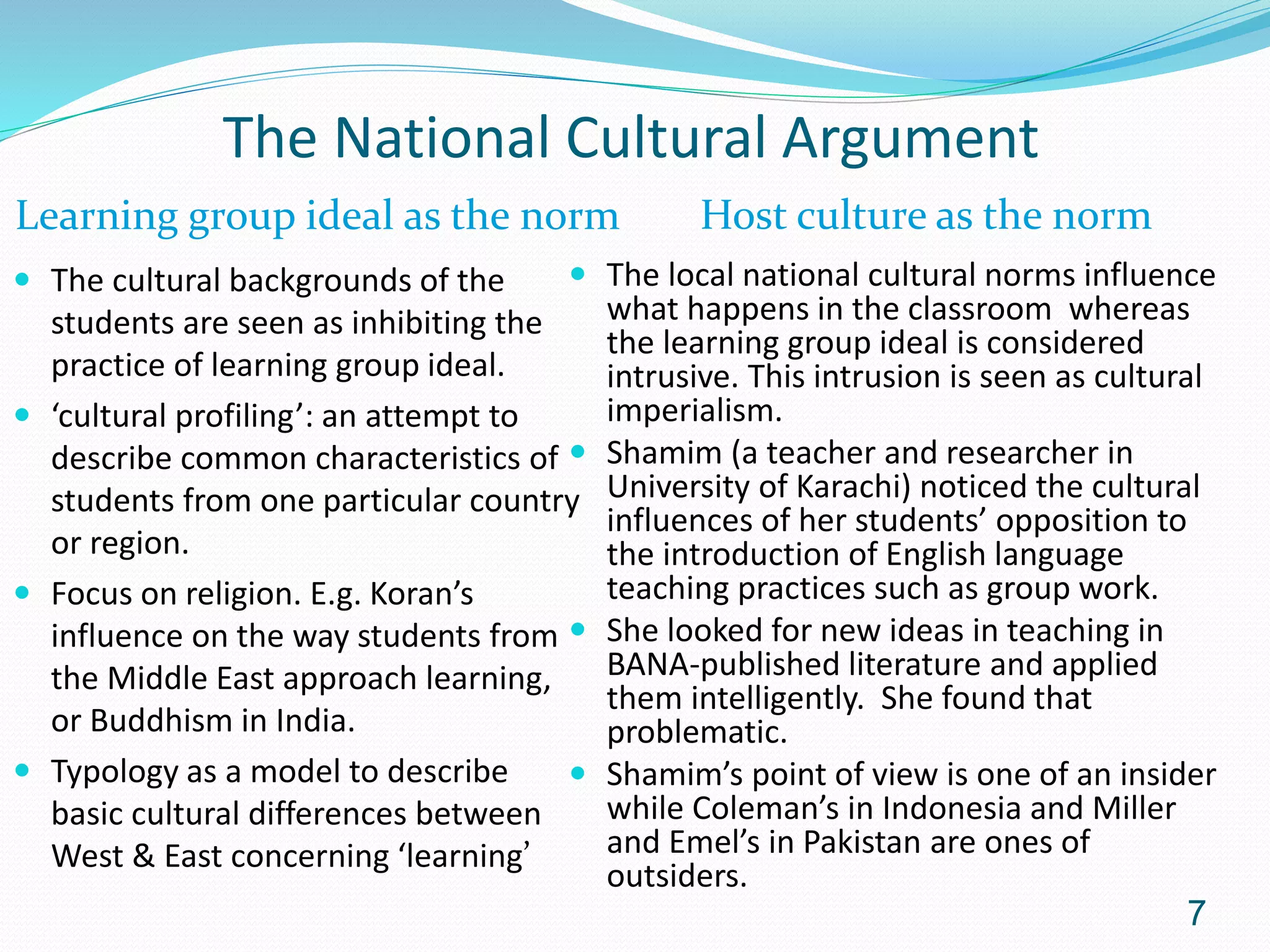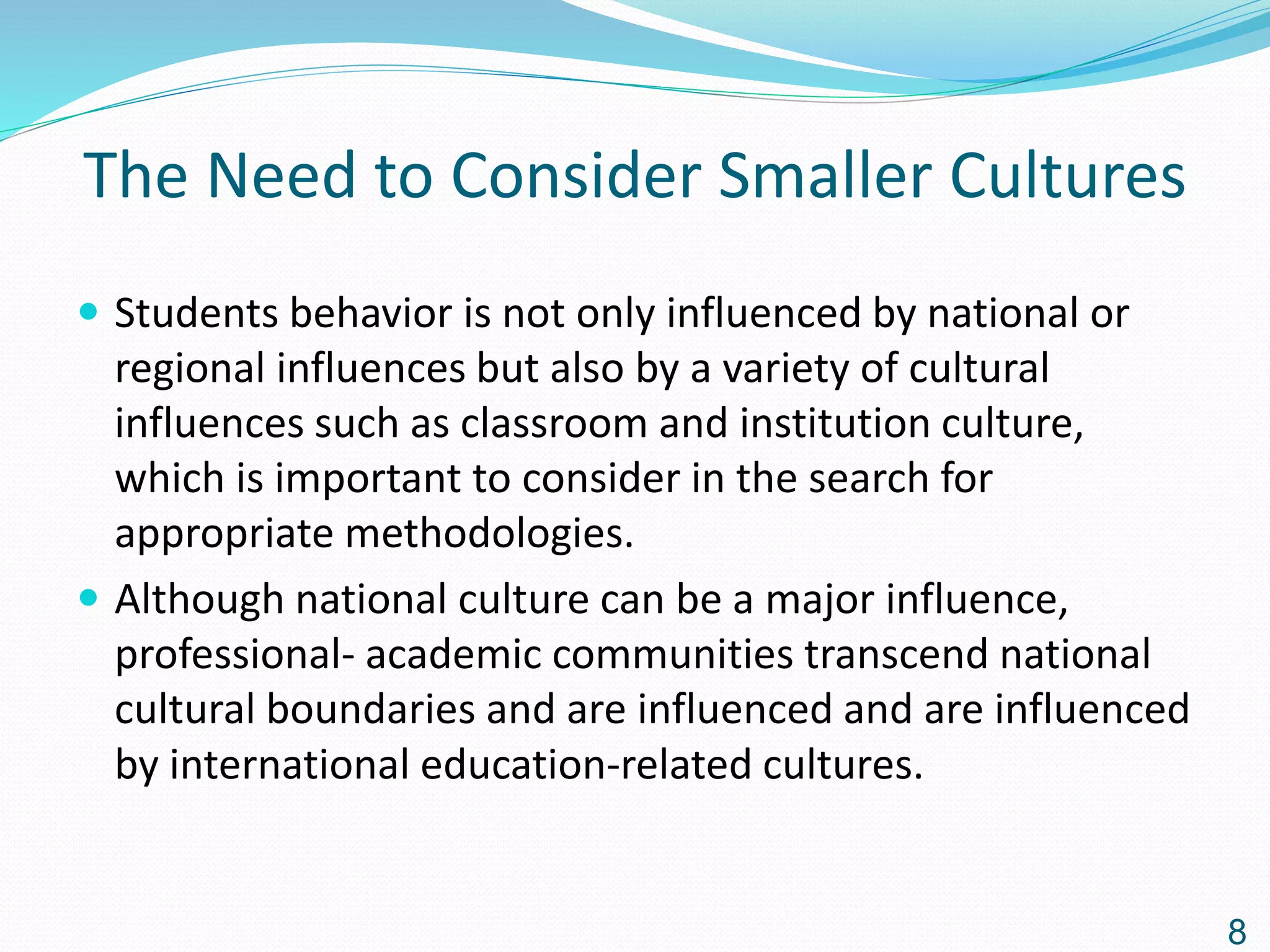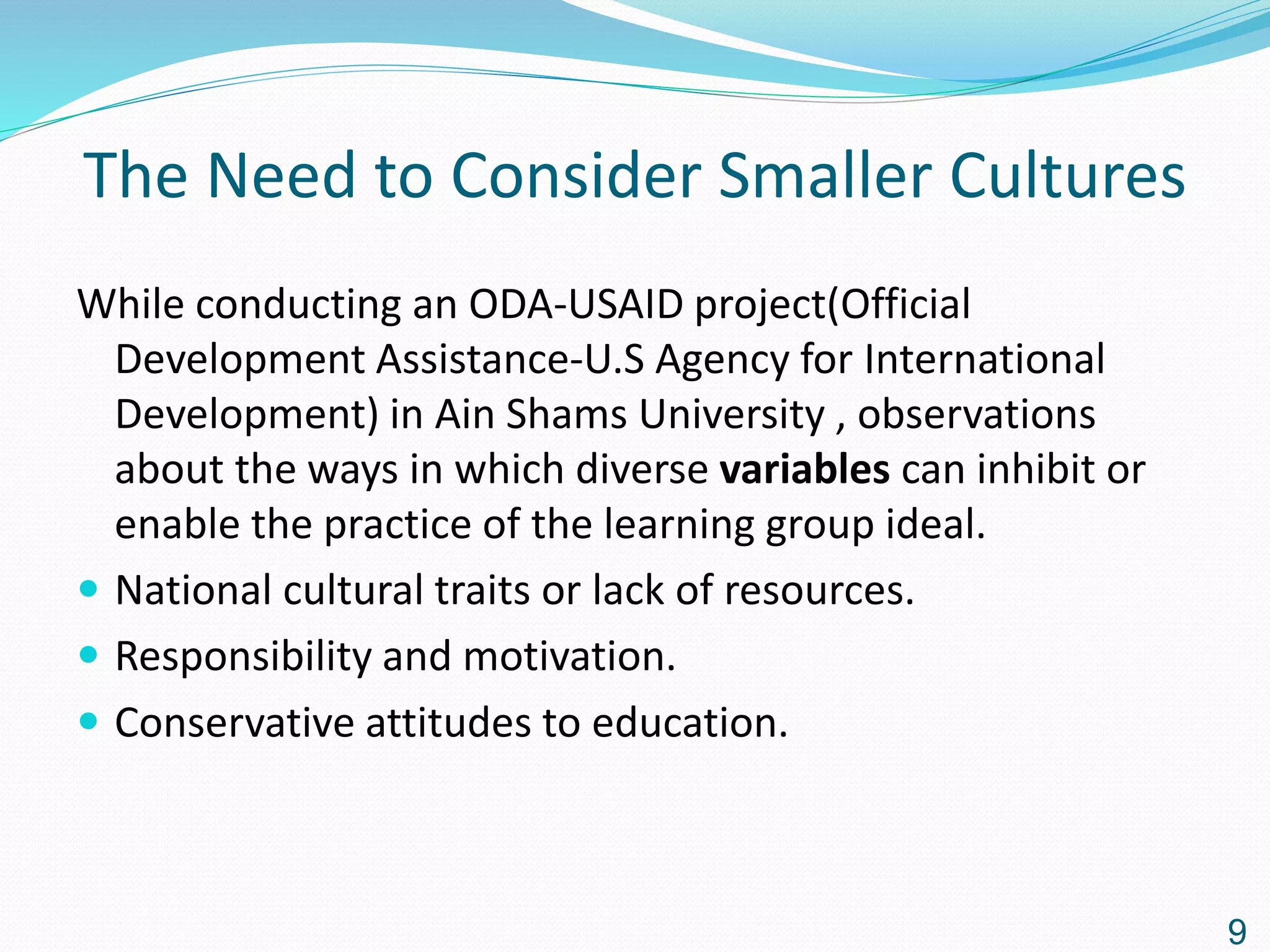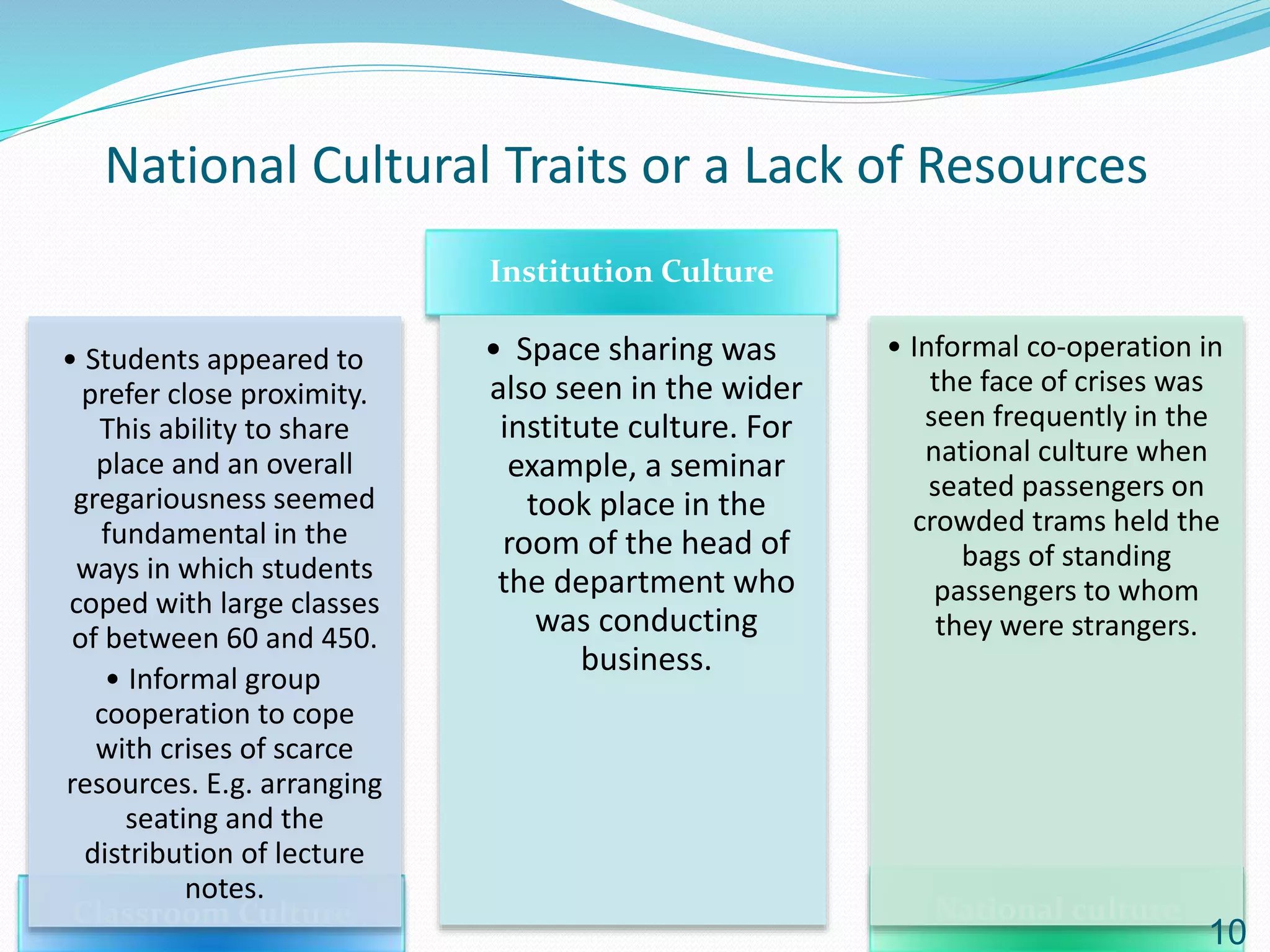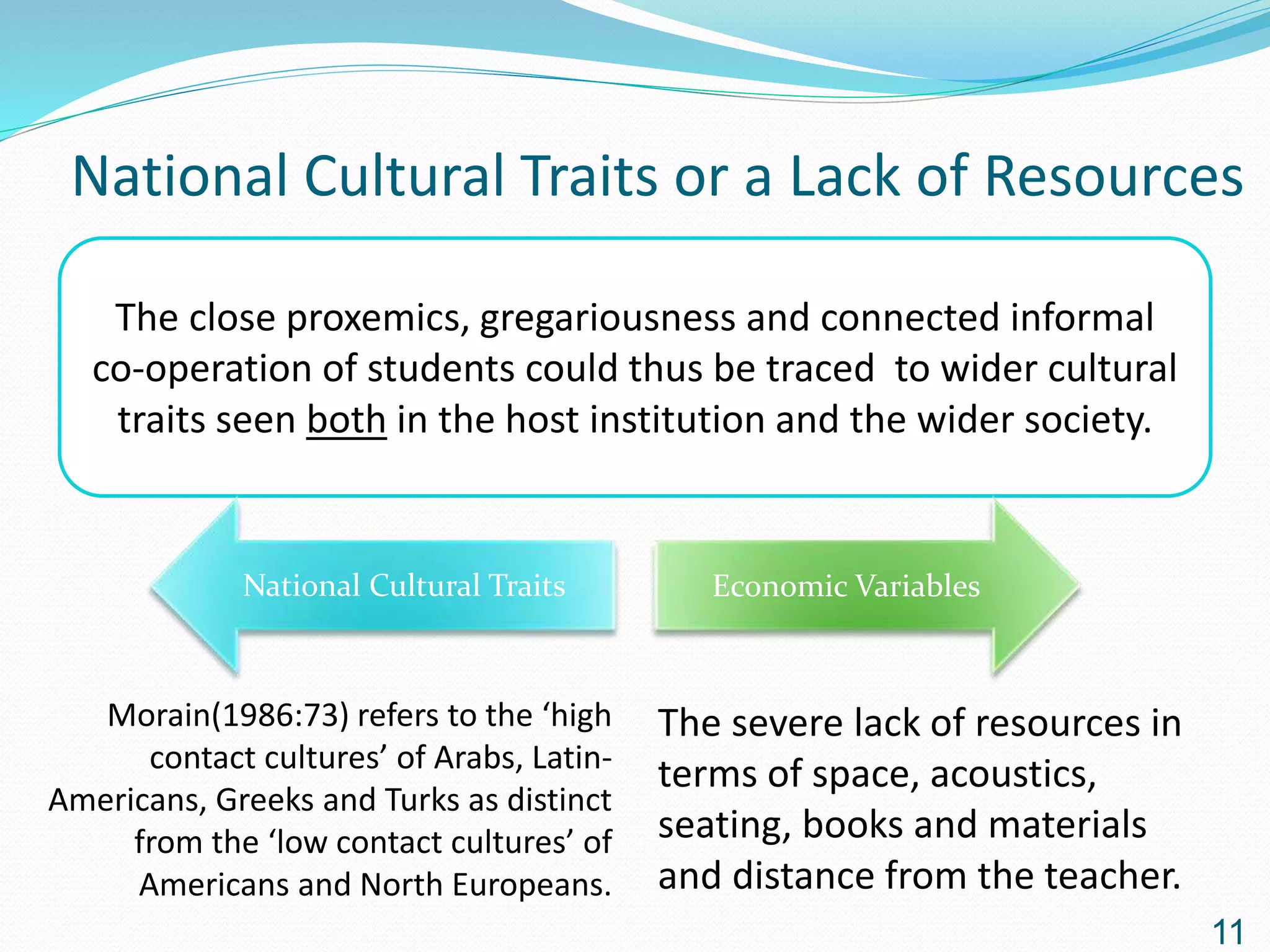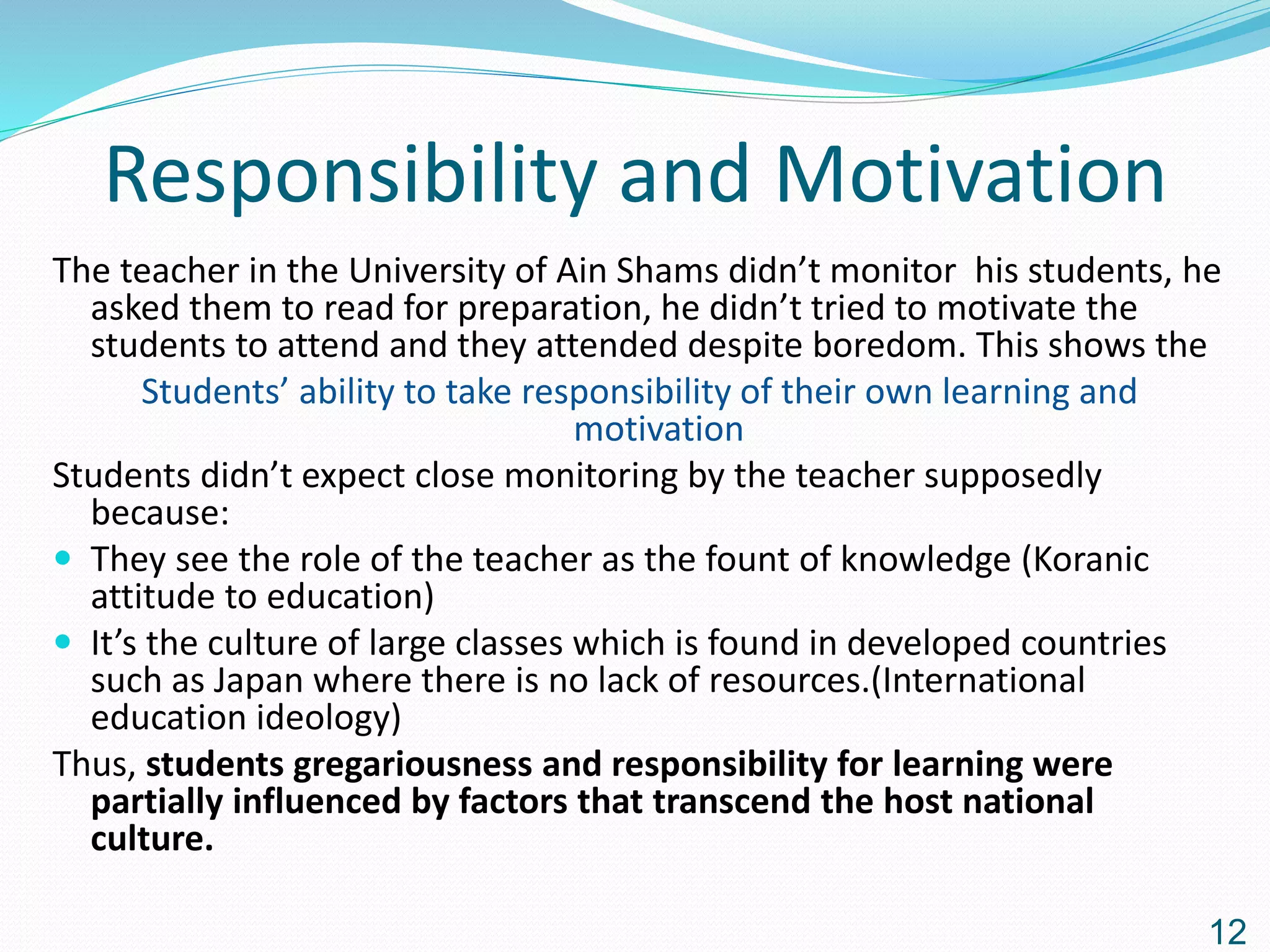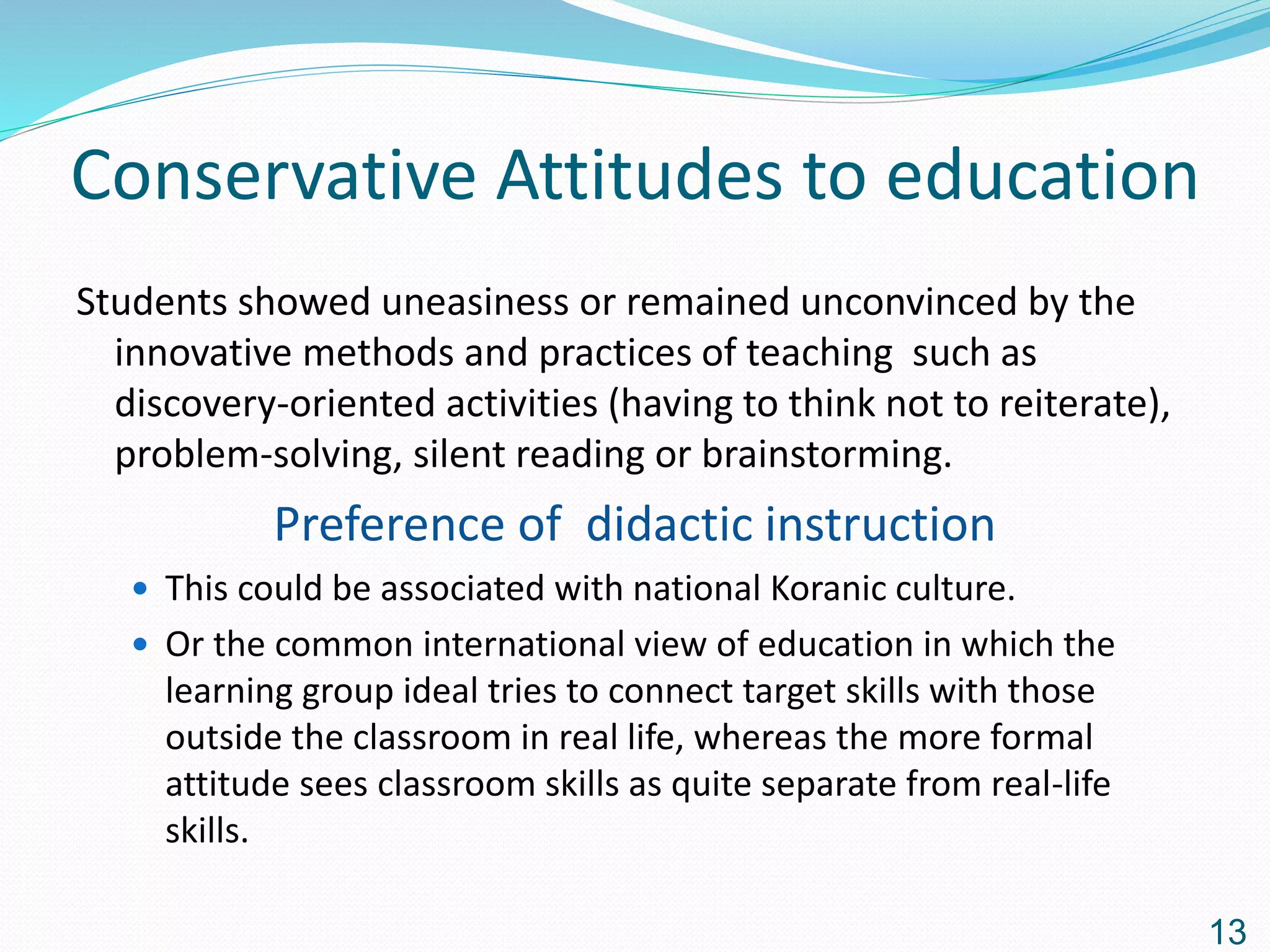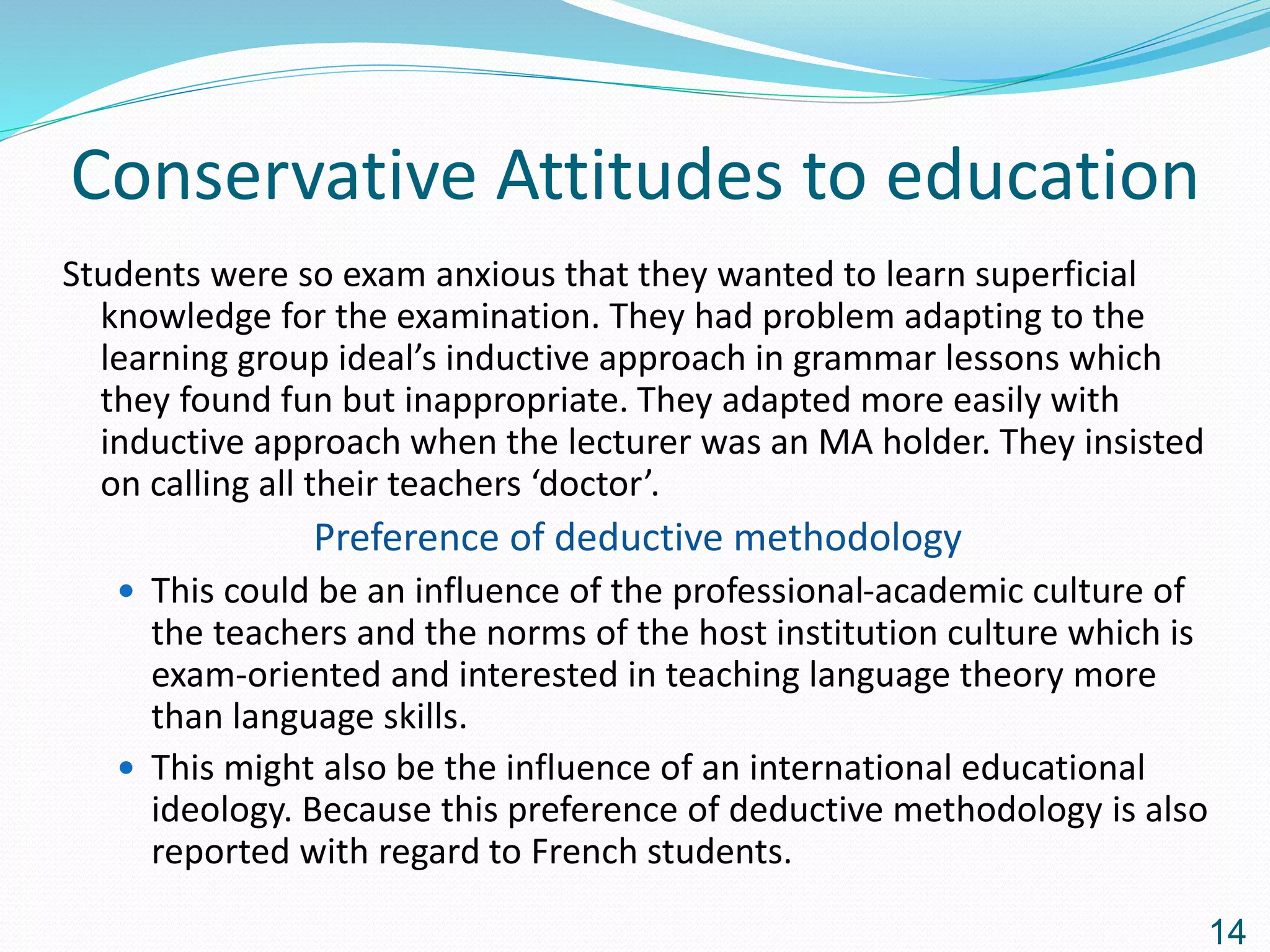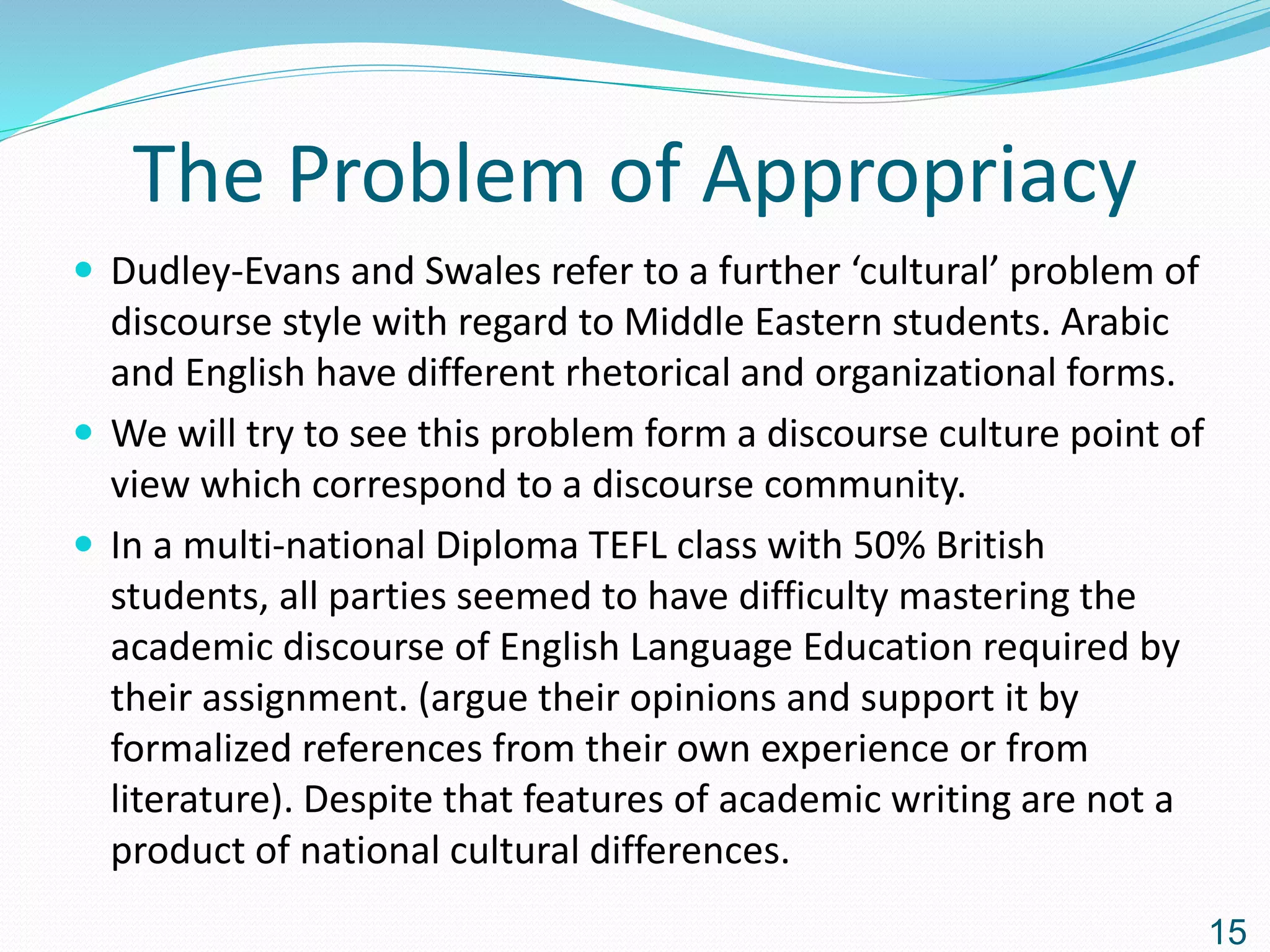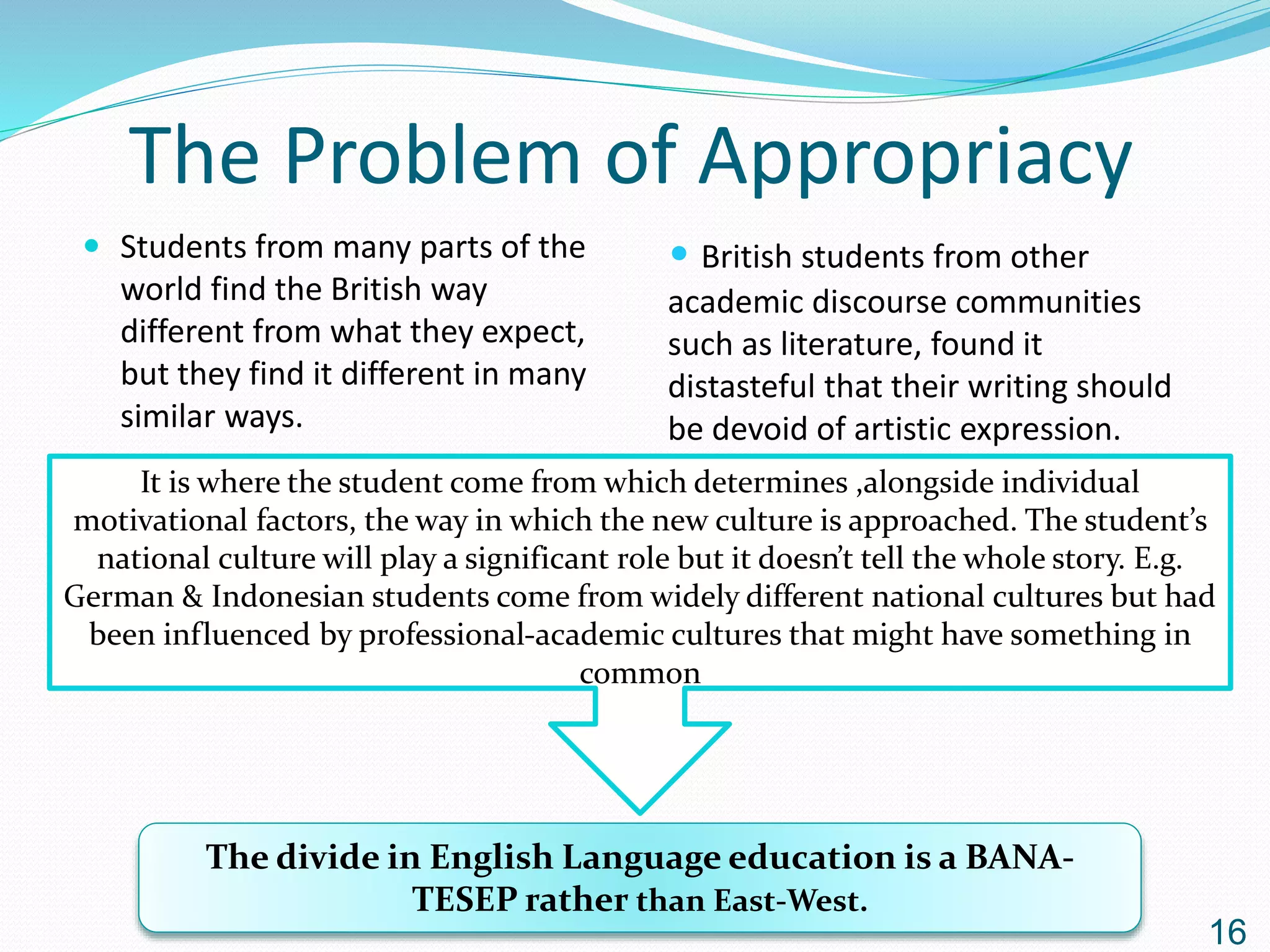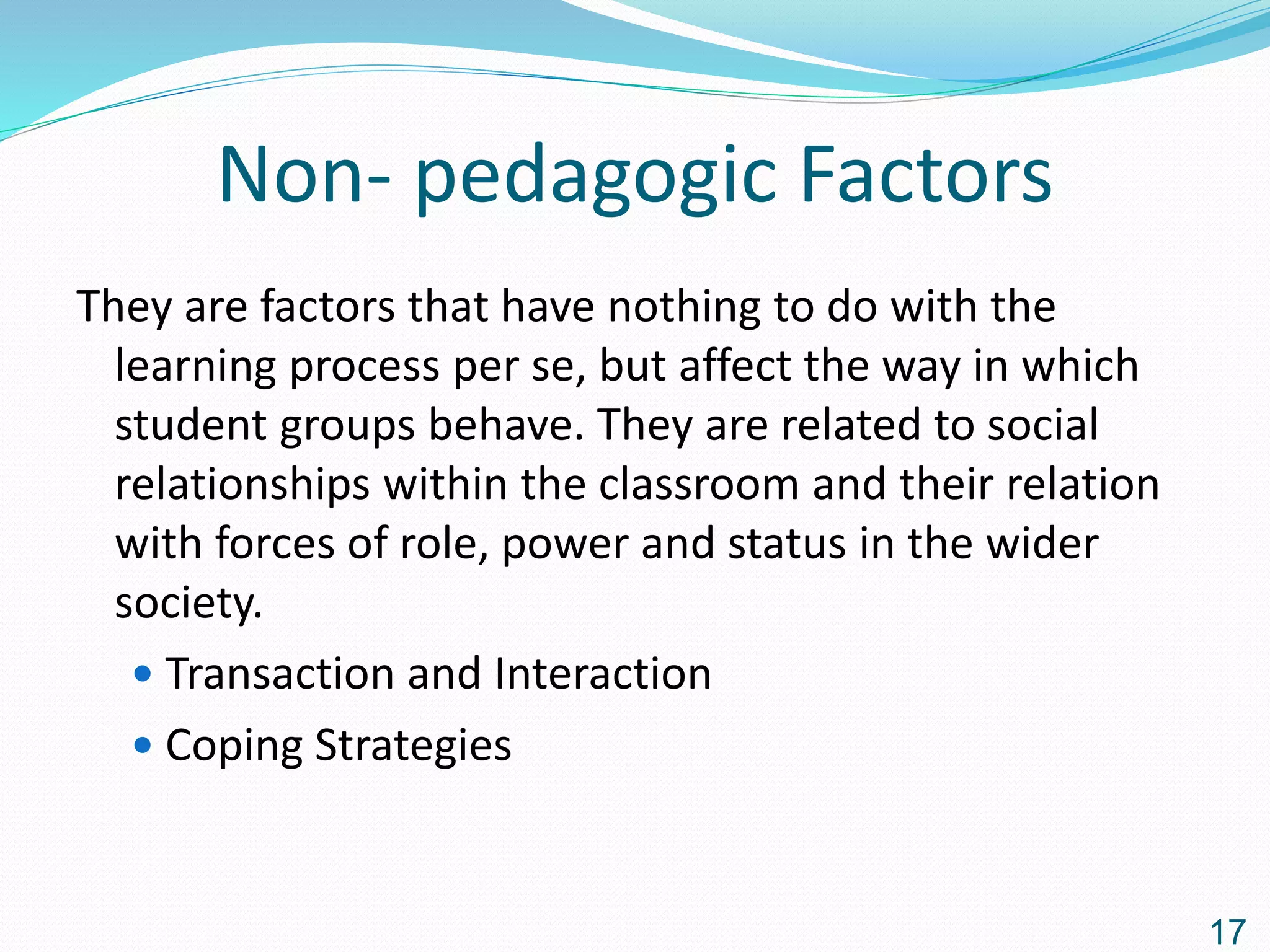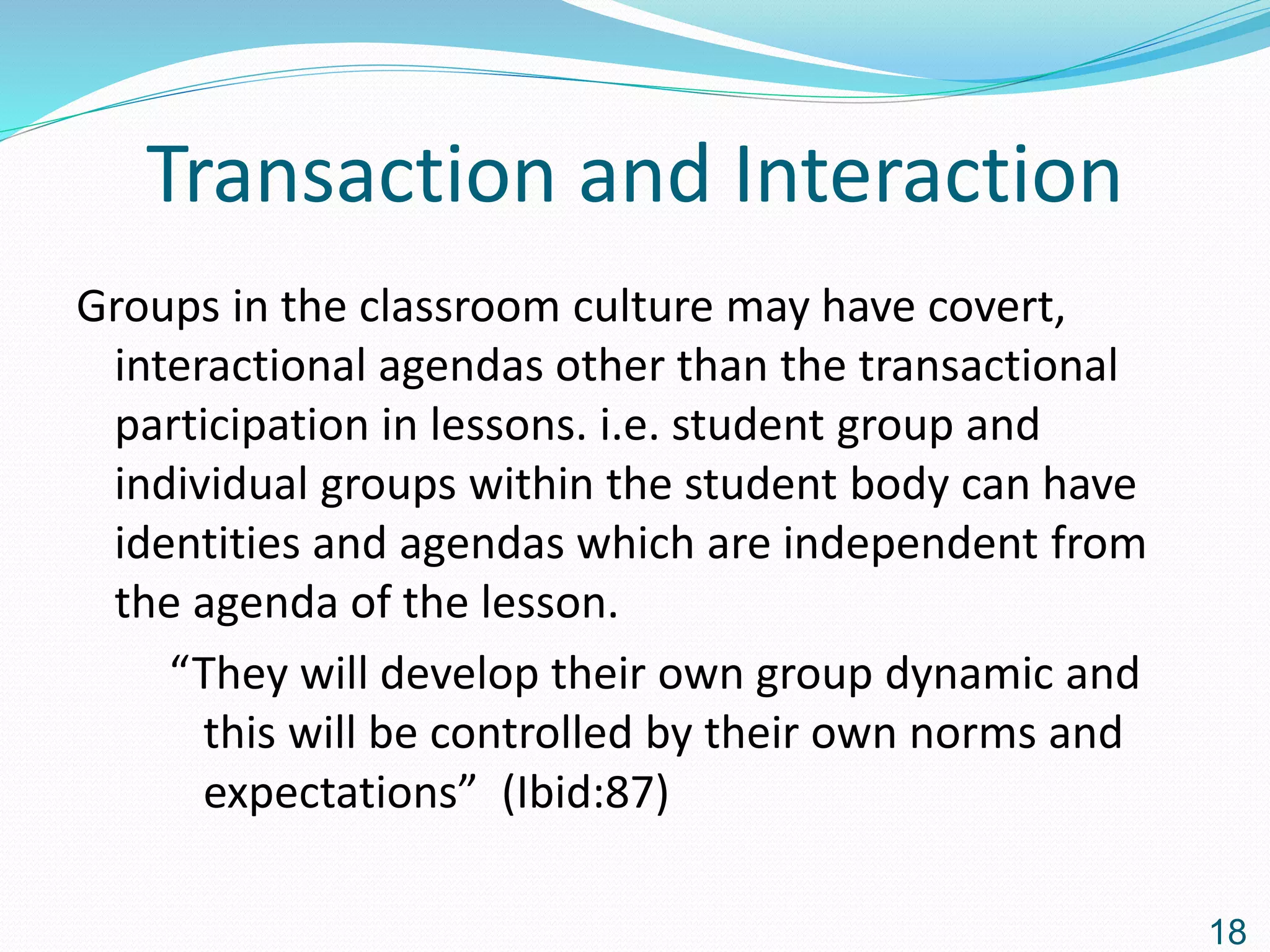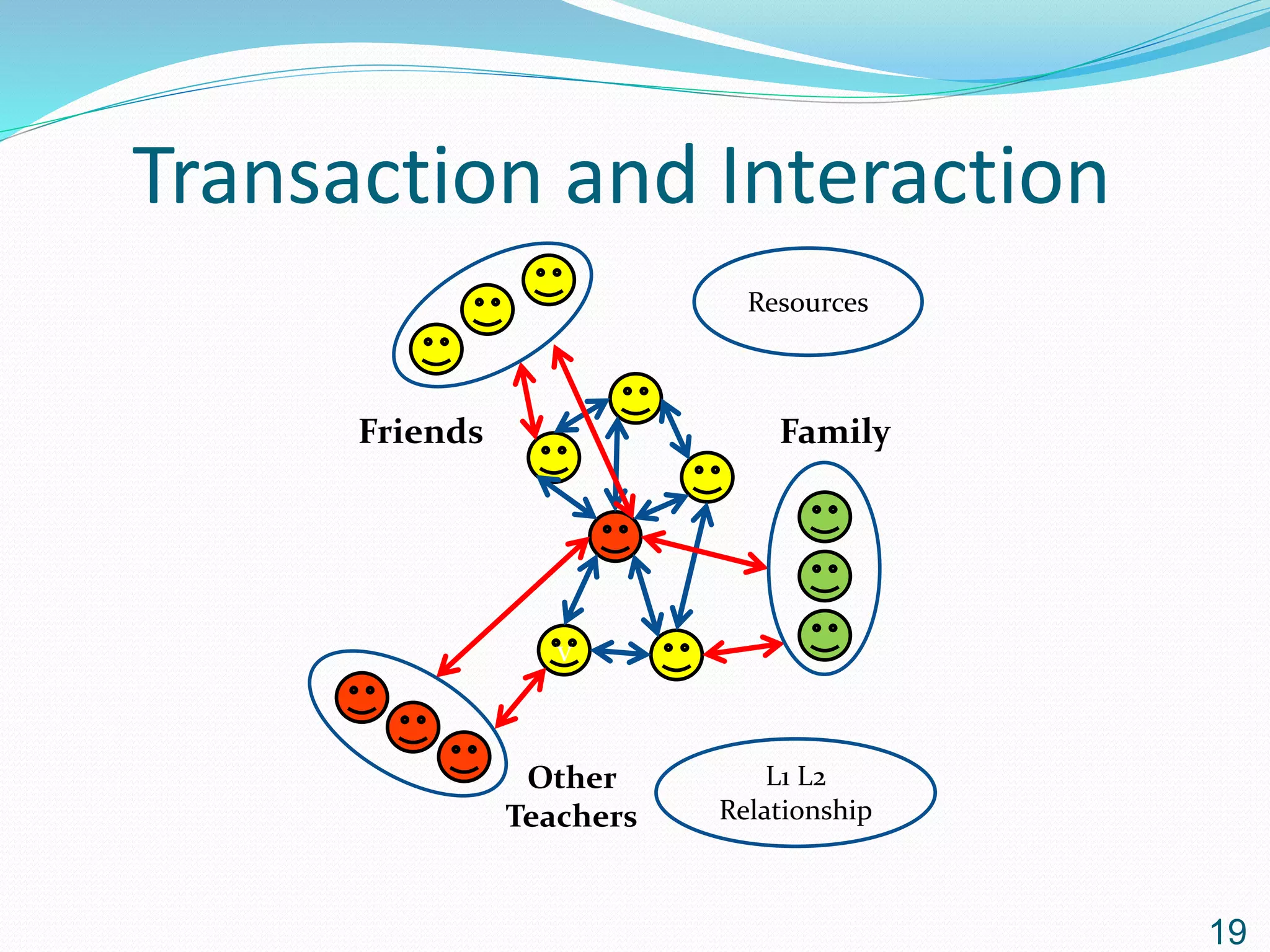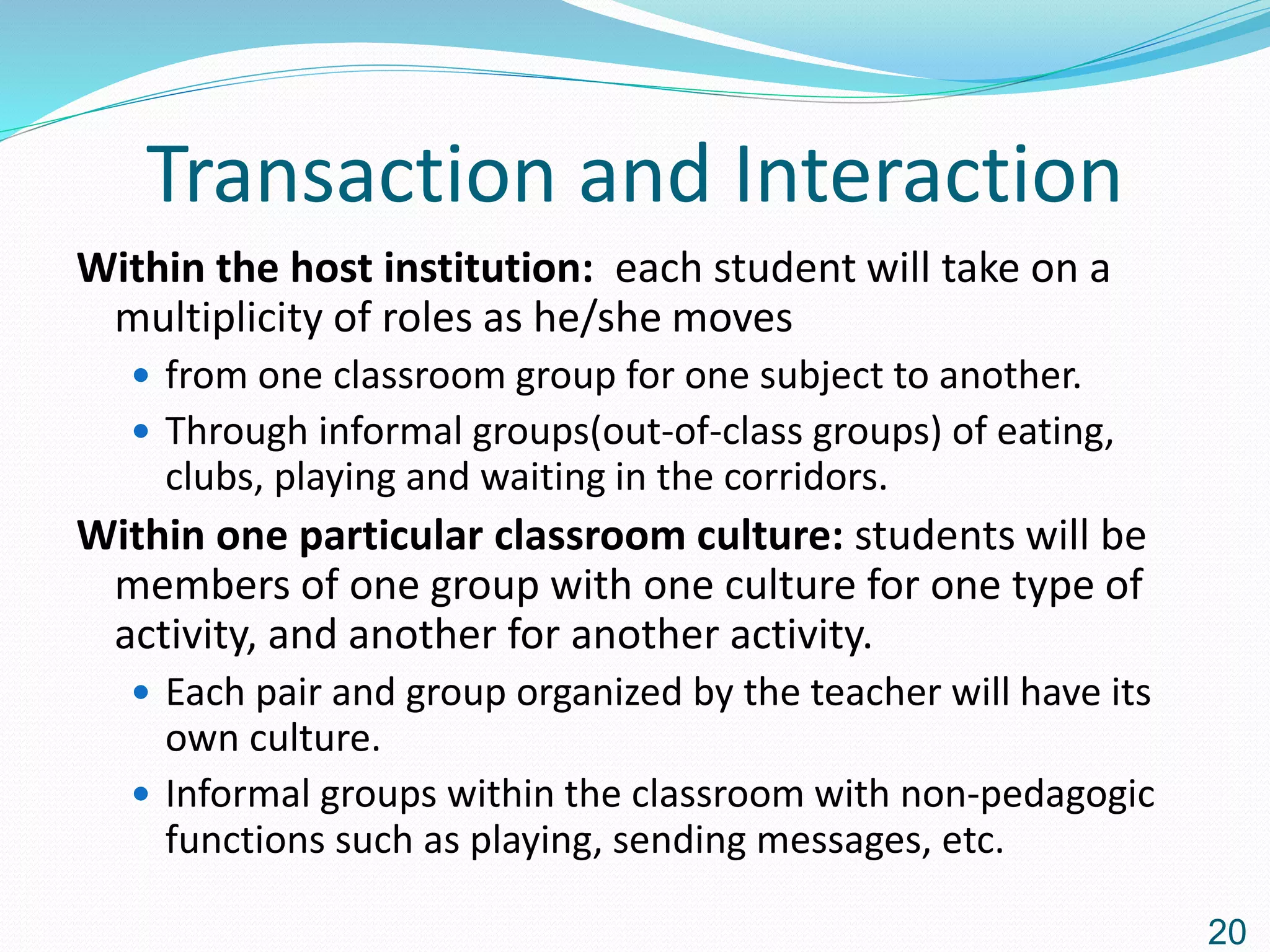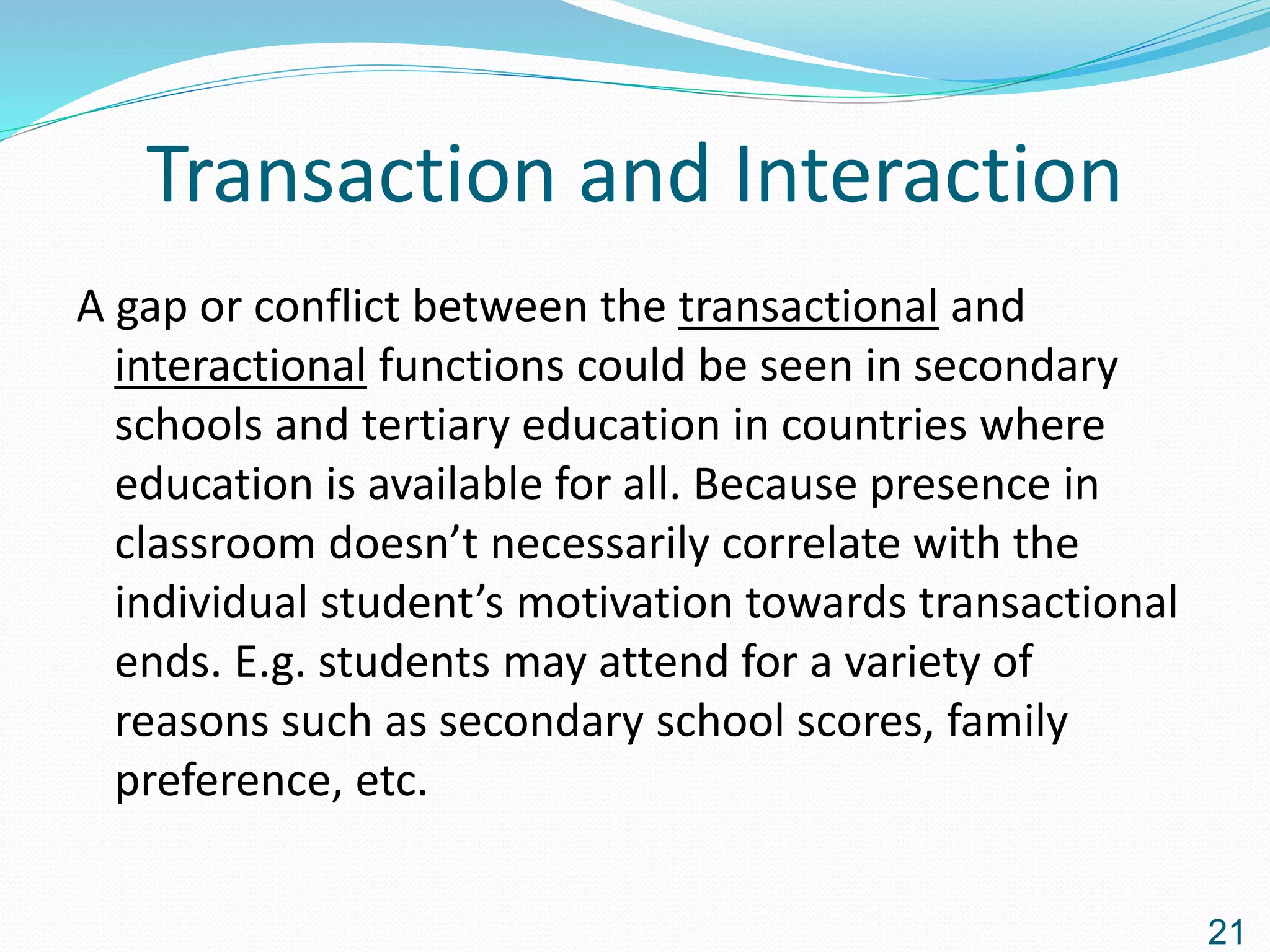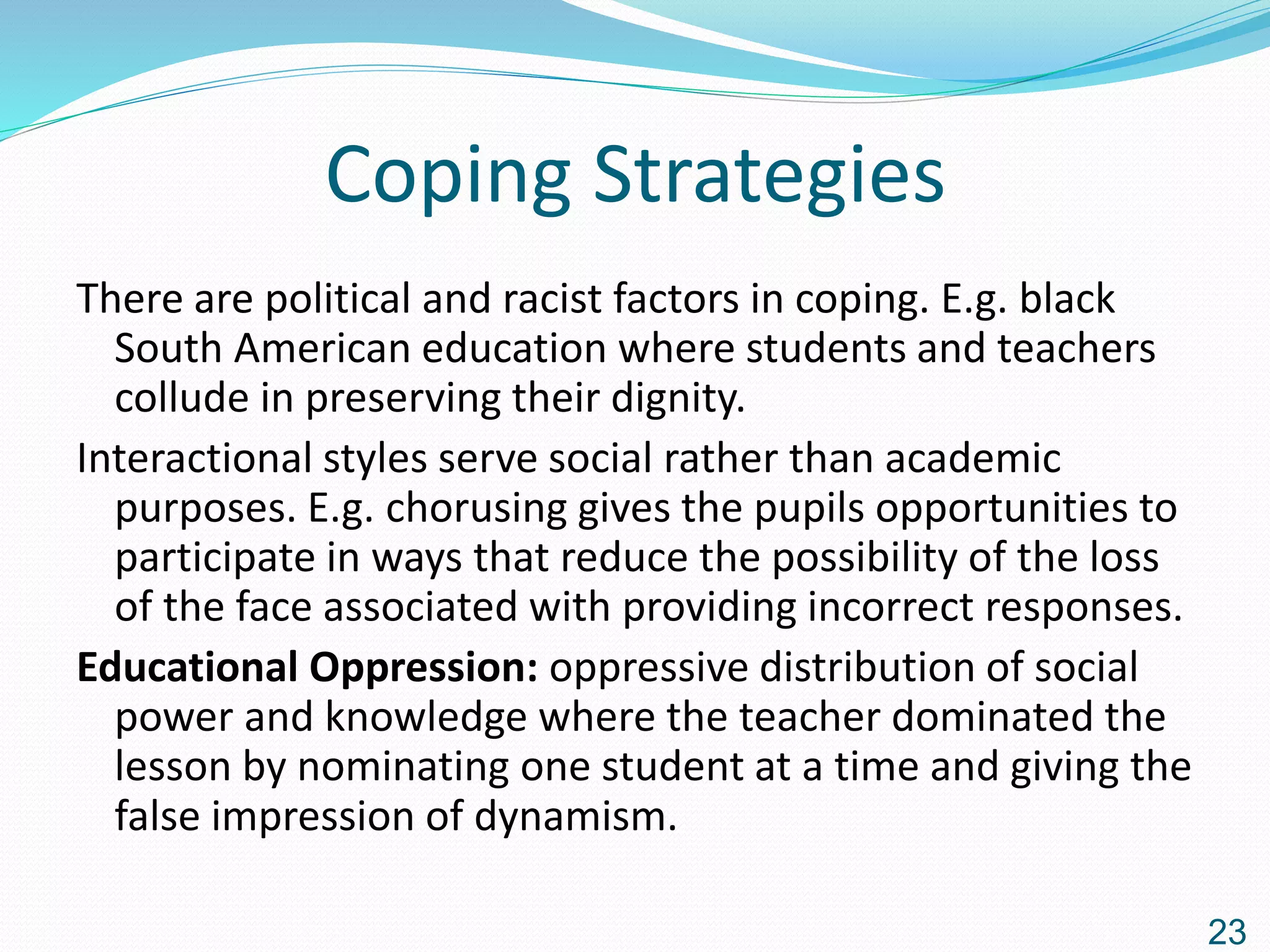1) The document discusses how classroom cultures are influenced by both micro and macro social contexts. It examines how national culture, institutional culture, and classroom culture can shape student behavior and influence the effectiveness of different teaching methodologies.
2) Two perspectives are presented on the role of national culture - that it can either inhibit collaborative learning ideals or that local cultural norms should take precedence over foreign teaching methods. The document advocates considering smaller cultural influences as well.
3) Non-pedagogical factors like student interactions, identities, coping strategies, and power dynamics also impact classroom cultures in ways unrelated to lesson content. Appropriate teaching methods require understanding these complex social influences.
